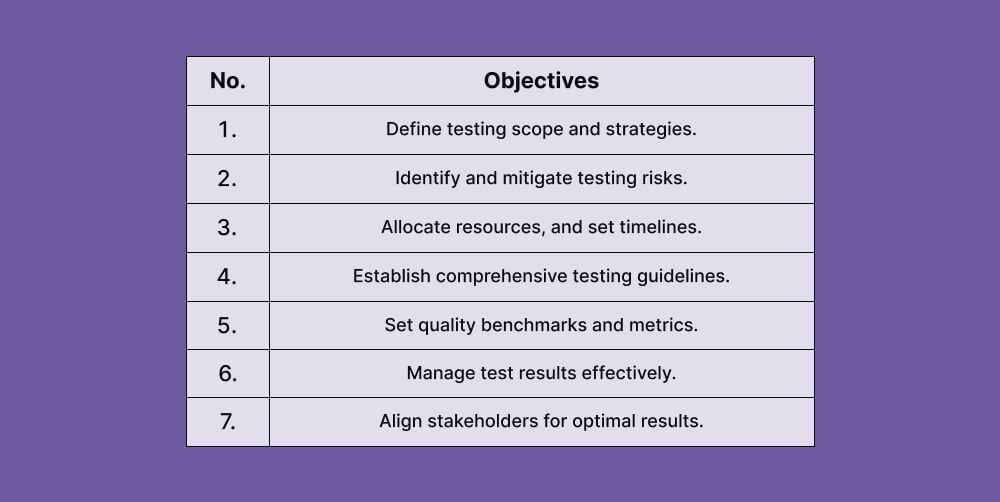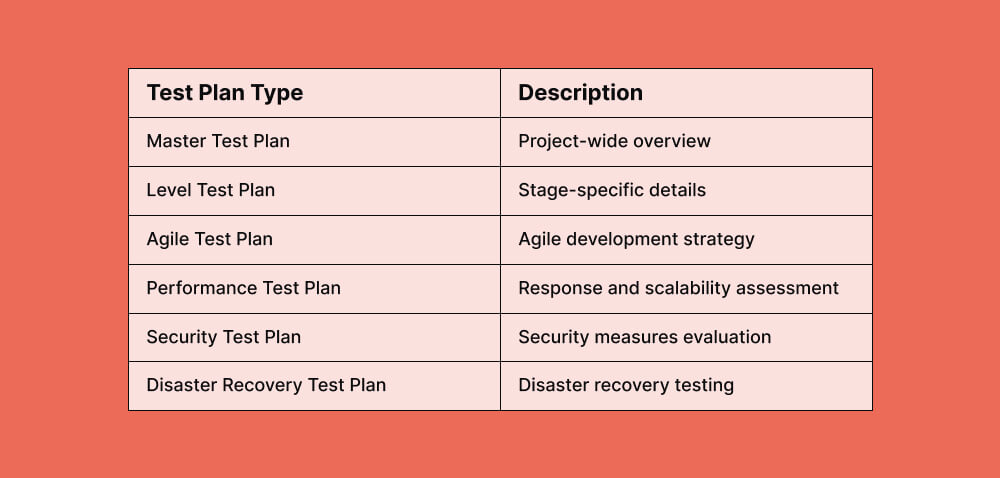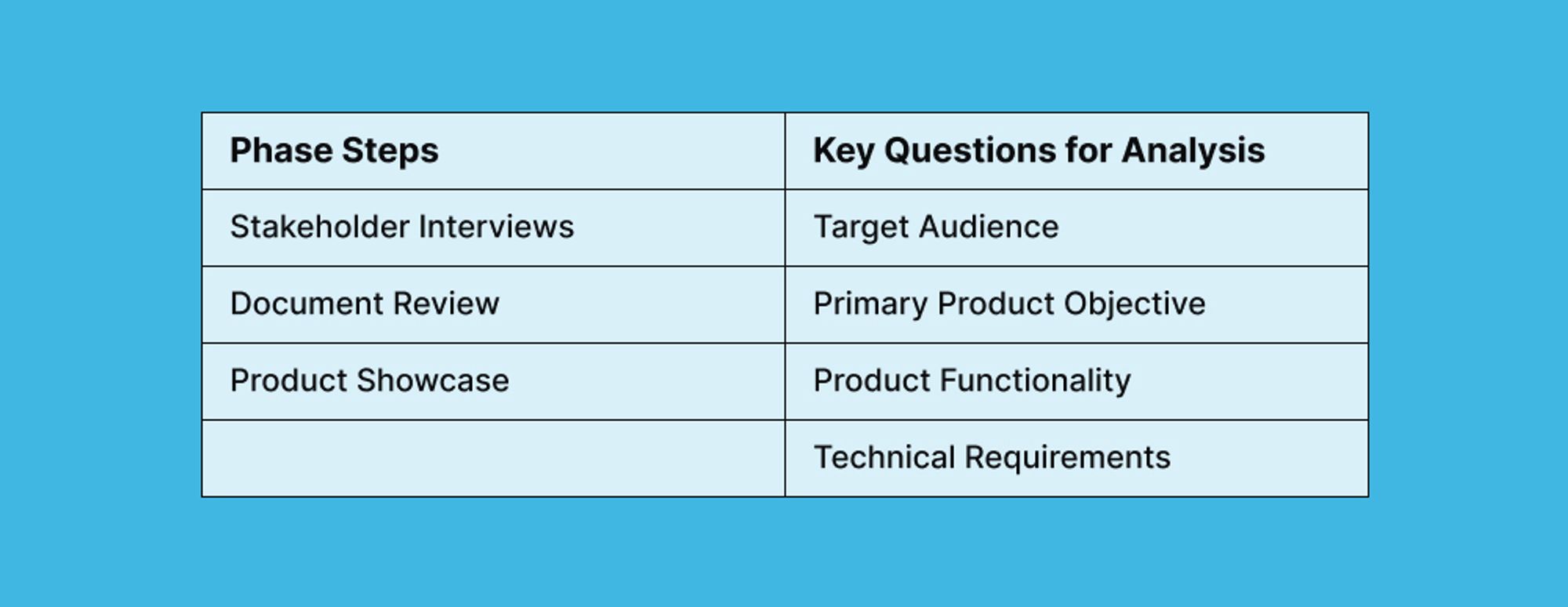How To Create A Test Plan Efficiently [Steps & Examples]
Your software needs testing, but you are unsure where to start? Testing software can be time-consuming and tricky if you don’t know how to do it properly or don’t have any test plan. In this blog post, we will go through each step of how to create a test plan for software testing to help you streamline the process to ensure a functional product. Let’s begin!
We can help you drive localization as a key initiative aligned to your business goals
What is a test plan for software testing, and why is it important?
A test plan is a detailed document that outlines the testing objectives, processes, procedures, and resources for a software testing project. It serves as a blueprint for the entire software testing process, ensuring that the testing objectives are clear and the resources and timelines are allocated in an efficient and effective manner.
A well-written test plan ensures that all stakeholders involved in the software development process understand the testing objectives, timelines, and efforts required. It also ensures that all testing aspects for each component are addressed and executed in a comprehensive and systematic manner, improving the testing accuracy of results and minimizing the possibility of defects during the application's lifetime.
Objectives of the test plan for software testing
The main objectives of the test plan for software testing are as follows:
- Defining the scope of the software testing efforts by outlining the testing objectives, strategies, and processes.
- Ensuring that the risks associated with the software testing process are identified, mitigated, and resolved.
- Allocating all necessary resources and setting a timeline for the testing process, ensuring that the testing is completed within the desired timeframe and budget.
- Establishing testing guidelines and procedures that govern the testing process, ensuring that testing is comprehensive, accurate, and meets quality standards.
- Setting quality benchmarks and testing metrics that can be used to determine the effectiveness of the testing process.
- Establishing a mechanism to manage test results, including bug reports, error logs, and test progress reports.
- Ensuring that all stakeholders involved in the software development process, such as developers, business analysts, product owners, and management, are aware of the testing objectives and processes and aligned for optimal results.

Types of test plans for software testing
There are different types of test plans that can be used for software testing. Some of the most common types are:
- Master test plan: Outlines the high-level testing objectives, processes, and resources for an entire project.
- Level test plan: Focuses on the testing objectives, processes, and resources for a specific stage or level of a project.
- Agile Test Plan: Used in Agile development environments and outlines the testing strategies, objectives, and testing schedules.
- Performance Test Plan: Focuses on the testing objectives, processes, and resources required to test a software application's response time and scalability.
- Security Test Plan: Outlines the types of security testing to be carried out, such as penetration testing, vulnerability assessments, and other security measures.
- Disaster Recovery Test Plan: The main goals of this plan are testing objectives, processes, and resources required to test the software application's ability to recover from disasters or critical events.

How to create a test plan for software testing in 2025
To guide you in creating an effective test plan for software testing in 2025, follow these eight key steps for a comprehensive and organized quality assurance strategy.
1. Analyze the product
Before commencing testing, acquiring comprehensive knowledge about the software is crucial. Inquire about its development process, intended purpose, and functionality to ensure a thorough understanding. This understanding is essential for crafting relevant and effective test objectives that contribute to comprehensive product testing.
During this phase, make sure to perform the next steps:
- Stakeholder Interviews: Engage with clients, developers, and designers through interviews to gather insights.
- Document Review: Examine project and product documentation thoroughly for a comprehensive understanding.
- Product Showcase: Demonstrate the product systematically through a step-by-step walkthrough.
Some of the key questions for analyzing the product are:
- Target Audience: Who is the intended user base for the product?
- Primary Product Objective: What is the main purpose or goal of the product?
- Product Functionality: How does the product operate or function?
- Technical Requirements: What are the specific hardware and software specifications necessary for the product?

2. Develop a test strategy
When developing a test strategy, you have to consider the type of testing you want to implement, the resources you need, and the schedule for testing. The more detailed your strategy is, the better your test plan will be. There are various types of software testing, each of which has its own benefits. Functional, usability, and compatibility testing are the most common software testing types used to ensure product quality.
3. Define test objectives
Test objectives provide a clear and concise understanding of the testing goals and timeline. A well-defined set of test objectives helps the testing team remain focused and deliver comprehensive testing coverage, ensuring a higher quality and more reliable software product.
Here are some examples of test objectives:
- Functional Testing Objectives: Ensure the software functions as intended. Examples of goals for this objective encompass validating user workflows, data processing, and verifying input/output parameters.
- Usability Testing Objectives: Focus on ease of use and user experience. Examples of goals for this objective include validating software accessibility, verifying user flow, and identifying user-related issues.
- Security Testing Objectives: Reveal potential security flaws in the program. Examples of goals for this objective include verifying authentication and authorization features and identifying potential threats.
- Performance Testing Objectives: Verify the efficiency and load-handling capabilities of the software. Examples of goals for this objective involve checking software reaction time, throughput, and scalability.
4. Define test criteria
Defining test criteria involves outlining the software's requirements to be considered successful in testing. This includes specifying the testing environment, acceptance criteria, test completion criteria, and other metrics that determine the success of the testing process. The test criteria should be aligned with the software's business needs, technical requirements, and target audience expectations. There are 2 types of criteria.
Suspension criteria
Suspension criteria involve certain conditions that, when met, indicate a problematic situation that needs to be resolved before testing can continue. For example, if a software application crashes frequently or critical errors arise, testing must be suspended until the issue is resolved. Testing must also be halted if the software has security vulnerabilities while the issue is addressed.

Exit criteria
Exit criteria are the conditions that must be met for testing to be considered complete. These criteria help ensure the software meets quality standards and is ready to release. Exit criteria may include various factors such as test coverage, test results, and defect resolution. For instance, all high-priority defects must be resolved, and all identified software features must be fully tested before testing can be considered complete.
5. Resources planning
Resource planning is integral to software testing, which involves identifying, allocating, and managing resources, including manpower, tools, and equipment. An effective resource planning strategy helps ensure that all necessary resources are available and the test schedule is planned efficiently. This involves determining the number of testers required, their skill set, and the testing tools required to execute the testing process effectively.
Selecting the appropriate tools for software testing is crucial in order to achieve optimal testing coverage and increase the efficiency and effectiveness of the testing process. The resource plan should also include contingency plans to mitigate unexpected challenges that may arise during the testing process.
6. Plan test environment
Planning the testing environment involves creating a suitable environment to carry out testing effectively. A well-planned test environment includes the selection of:
- Hardware and Software Tools: Select tools that align with testing requirements.
- System Requirements: Define configurations for compatibility.
- Network Topology Configurations: Set up network structure for accurate testing.
- Software Licenses: Manage licenses to ensure compliance.
- Supporting Equipment: Acquire tools to enhance the testing process.
- Efficiency and Cost-Effectiveness: Optimize decisions for effective and economical testing.
7. Schedule and estimation
Scheduling and estimation involve establishing timelines and resource allocation needed to execute the testing process effectively. A testing schedule should consider the following:
- Number of Tests: Consider the quantity of tests required for thorough coverage.
- Types of Tests: Identify and plan for various testing types based on project needs.
- Testing Techniques: Evaluate and incorporate appropriate testing techniques for accuracy.
- Communication Mediums: Determine effective communication channels within the team.
- Team Members: Account for team size and roles in the testing schedule.
- Test Environment: Factor in the setup and availability of the test environment.
- Realistic Estimations: Ensure the schedule provides realistic timelines based on all relevant factors.
8. Determinate test deliverables
Determining test deliverables involves defining the items that should be delivered at the end of the testing process. Typically, test deliverables comprise test cases, defect reports, test plans, test logs, and test summary reports, among other things. The deliverables result from the testing process and support various aspects of the software development cycle, such as documentation, project management, and analysis.
By defining the test deliverables, the testing team provides stakeholders with a clear understanding of the testing process's output, making it easier to evaluate test effectiveness and determine whether testing goals are met.
Conclusion
After we went through each step of how to create a test plan for software testing, its your turn to choose what type of testing your software needs. Having a clear goal and criteria can elevate your software development to another level and turn a challenging and time-consuming procedure into a professional and well-organized task.
How can GAT help you with software testing?
Global App Testing is a software testing company that provides comprehensive and advanced software testing services to ensure the quality and performance of software products. Here are some ways Global App Testing can help you with software testing:
- Comprehensive testing coverage: We offer efficient and thorough testing coverage to ensure that the software product meets all the specified requirements.
- Wide range of testing services: GAT provides a wide range of testing services, including functional testing, performance testing, security testing, and test automation services.
- Experienced and dedicated team: With 90,000 testers in 190+ countries, Global App Testing has a team of experienced and dedicated software testers who utilize the latest tools and methodologies to deliver high-quality and reliable software testing solutions.
- State-of-the-art testing methodologies: We utilize state-of-the-art testing methodologies such as continuous integration, regression testing, and exploratory testing to ensure that software products are tested efficiently and effectively.
- Customized testing solutions: GAT provides customized testing services that are tailored to meet the unique needs of each client. They can also provide testing services that are aligned with specific regulatory requirements.
To explore how GAT can enhance your software's quality, sign up and schedule a call with our team!
We can help you drive global growth, better accessibility and better product quality at every level.
FAQ
Is a test plan mandatory for software testing?
While not mandatory in all cases, a test plan is highly recommended for effective software testing. It provides clarity, direction, and documentation of the testing process, ultimately contributing to improved quality and successful project outcomes.
Is a test plan applicable to all software development projects?
While not mandatory in all cases, a test plan is highly recommended for effective software testing. It provides clarity, direction, and documentation of the testing process, ultimately contributing to improved quality and successful project outcomes.
Can a test plan be modified during the software development process?
A test plan is a dynamic document that can be modified and updated as the software development progresses. Changes may be necessary due to shifting project requirements, unforeseen challenges, or the need for adjustments in testing strategies. Regular reviews and updates ensure the test plan remains aligned with project goals.
Who is responsible for preparing a test plan?
The test plan is typically prepared by the test manager or lead, often in collaboration with the project manager and other key stakeholders. It is a comprehensive document that outlines the overall testing strategy.
Keep learning
7 Best software testing tools to try in 2025
10 Software testing trends you need to know
9 Key challenges of software testing to keep in mind

